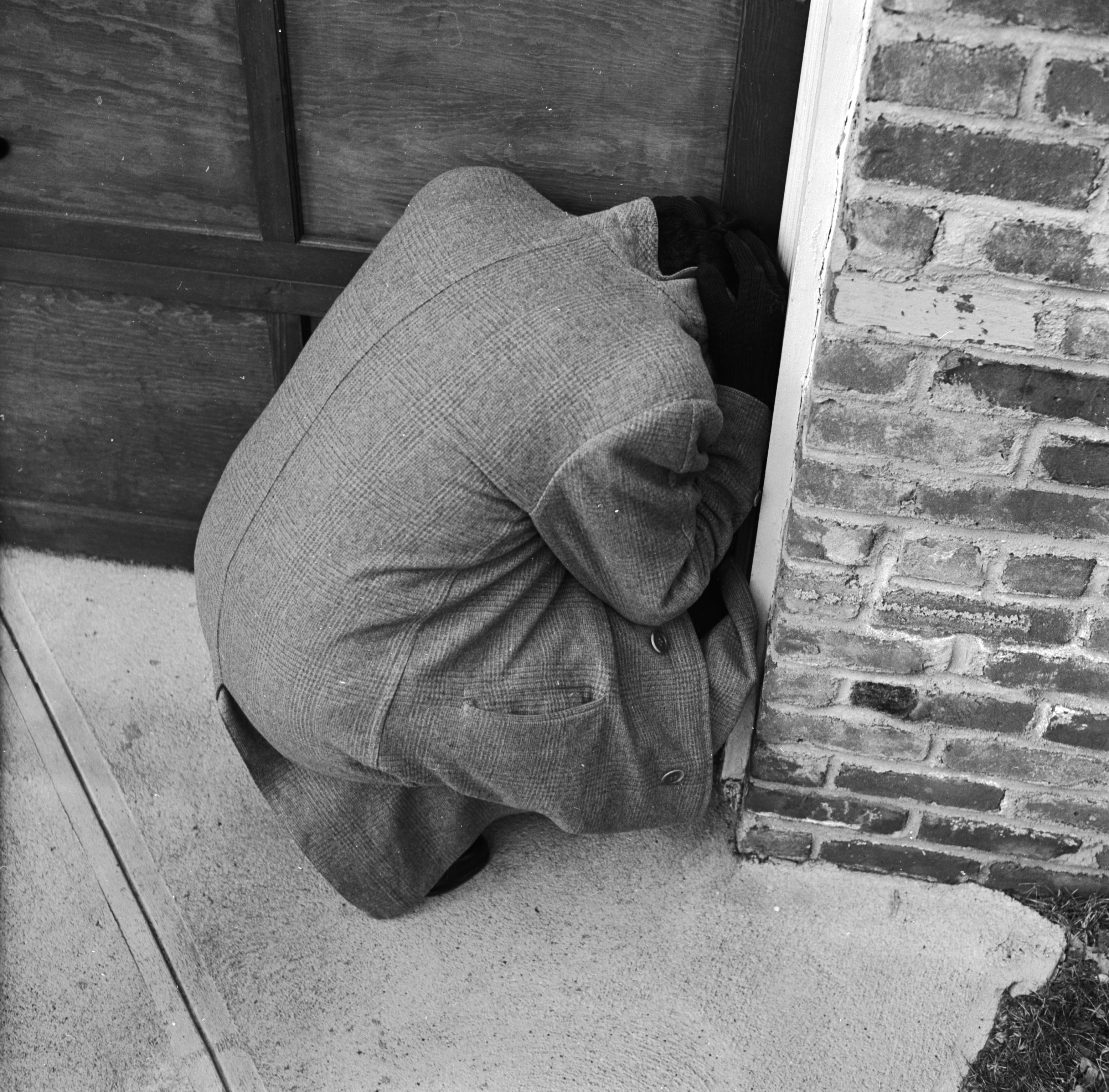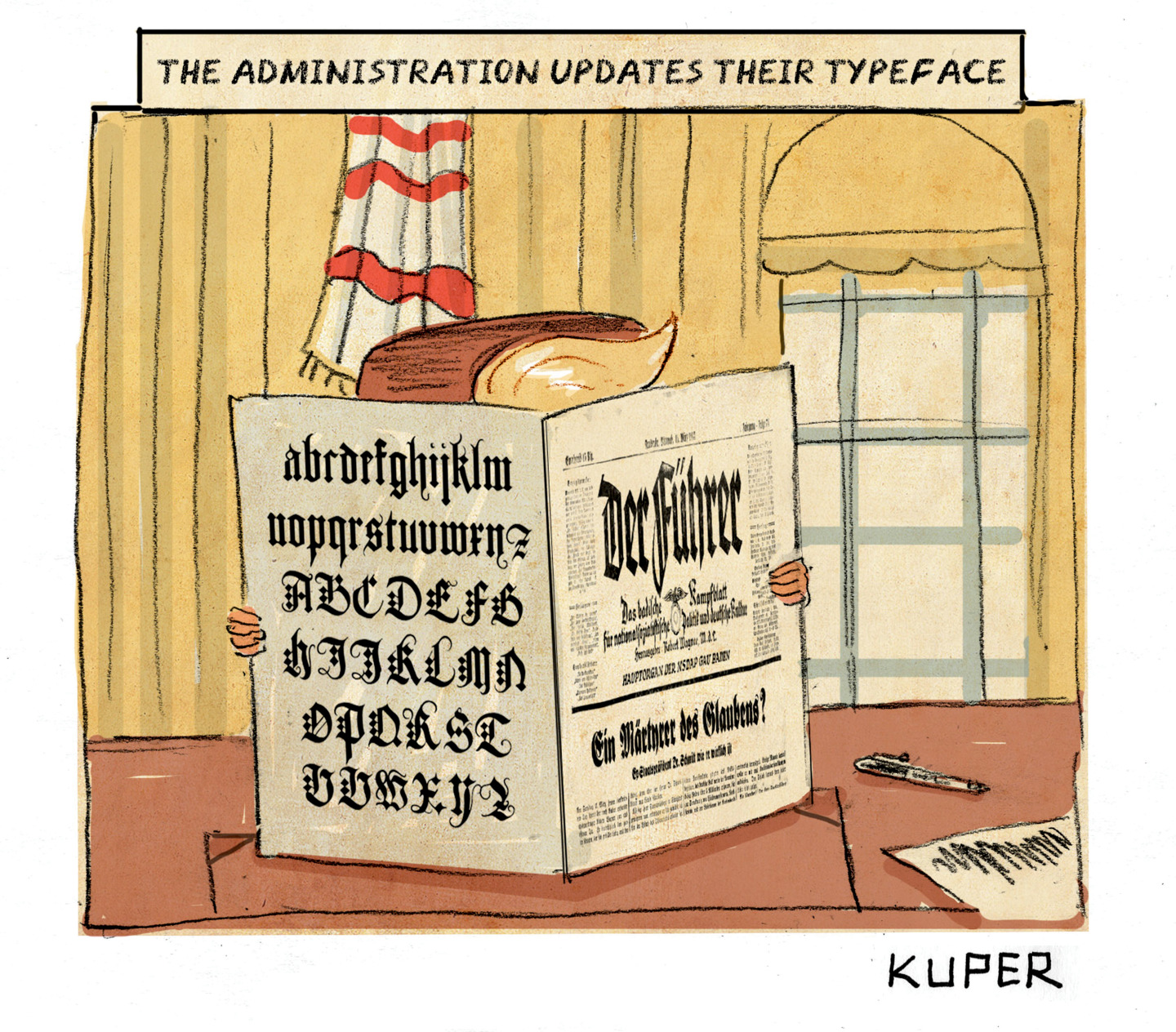Duck and cover
In Washington, a pre-emptive strike on nuclear-armed North Korea is getting serious consideration


This is the editor’s letter in the current issue of The Week magazine.
The timing is probably just coincidental, but next week the Centers for Disease Control and Prevention will hold a public forum to educate us about how to respond to "a nuclear detonation." Experts in "radiation studies" will provide helpful tips, such as "shelter in place" for at least 24 hours. It might be advisable to pay attention. As Kim Jong Un continues to pursue his development of nuclear missiles that can strike the U.S., Gerald Seib reports in The Wall Street Journal this week, there is a lively debate within the Trump administration about a pre-emptive strike. If Kim tests another ICBM or hydrogen bomb, national security adviser H.R. McMaster is arguing, the U.S. should give him "a bloody nose," with a limited airstrike on his nuclear facilities — and gamble that he doesn't respond.
That's a high-stakes wager. If he so chooses, Kim could quickly unleash his massive artillery and rocket batteries on the 20 million people in and around Seoul. He could even try to prove that his "nuclear button" works and launch an ICBM. Despite his recent talks with the South, Kim will never surrender his nukes; that realization has led some in Washington to say a U.S. pre-emptive attack merits serious consideration. Based on his chats with the president, Sen. Lindsey Graham (R-S.C.) says there's a 70 percent chance of a U.S. attack if Kim tests another missile. In a new Foreign Policy piece headlined "It's time to bomb North Korea," military strategist Edward Luttwak calls for an all-out air attack on Kim's regime, and argues that South Korea's "self-inflicted" vulnerability "cannot be allowed to paralyze the U.S." The South, Luttwak says, should have built more air-raid shelters, installed more anti-missile batteries, and moved those 20 million people farther away from the North, so it's their own fault if tens of thousands of people die. In Seoul, it might be time to practice sheltering in place. Maybe in your hometown, too.
The Week
Escape your echo chamber. Get the facts behind the news, plus analysis from multiple perspectives.

Sign up for The Week's Free Newsletters
From our morning news briefing to a weekly Good News Newsletter, get the best of The Week delivered directly to your inbox.
From our morning news briefing to a weekly Good News Newsletter, get the best of The Week delivered directly to your inbox.
A free daily email with the biggest news stories of the day – and the best features from TheWeek.com
William Falk is editor-in-chief of The Week, and has held that role since the magazine's first issue in 2001. He has previously been a reporter, columnist, and editor at the Gannett Westchester Newspapers and at Newsday, where he was part of two reporting teams that won Pulitzer Prizes.
-
 A long weekend in Fontainebleau
A long weekend in FontainebleauThe Week Recommends Less than an hour from Paris, this historic town is perfect for a short break
-
 Political cartoons for December 16
Political cartoons for December 16Cartoons Tuesday’s editorial cartoons include calibrating fonts, Christmas classics, and more
-
 Cryptocurrency and the future of politics
Cryptocurrency and the future of politicsIn The Spotlight From electoral campaigns to government investments, crypto is everywhere and looks like it’s here to stay
-
 Has Zohran Mamdani shown the Democrats how to win again?
Has Zohran Mamdani shown the Democrats how to win again?Today’s Big Question New York City mayoral election touted as victory for left-wing populists but moderate centrist wins elsewhere present more complex path for Democratic Party
-
 Millions turn out for anti-Trump ‘No Kings’ rallies
Millions turn out for anti-Trump ‘No Kings’ ralliesSpeed Read An estimated 7 million people participated, 2 million more than at the first ‘No Kings’ protest in June
-
 Ghislaine Maxwell: angling for a Trump pardon
Ghislaine Maxwell: angling for a Trump pardonTalking Point Convicted sex trafficker's testimony could shed new light on president's links to Jeffrey Epstein
-
 The last words and final moments of 40 presidents
The last words and final moments of 40 presidentsThe Explainer Some are eloquent quotes worthy of the holders of the highest office in the nation, and others... aren't
-
 The JFK files: the truth at last?
The JFK files: the truth at last?In The Spotlight More than 64,000 previously classified documents relating the 1963 assassination of John F. Kennedy have been released by the Trump administration
-
 'Seriously, not literally': how should the world take Donald Trump?
'Seriously, not literally': how should the world take Donald Trump?Today's big question White House rhetoric and reality look likely to become increasingly blurred
-
 Will Trump's 'madman' strategy pay off?
Will Trump's 'madman' strategy pay off?Today's Big Question Incoming US president likes to seem unpredictable but, this time round, world leaders could be wise to his playbook
-
 Democrats vs. Republicans: who are US billionaires backing?
Democrats vs. Republicans: who are US billionaires backing?The Explainer Younger tech titans join 'boys' club throwing money and support' behind President Trump, while older plutocrats quietly rebuke new administration
